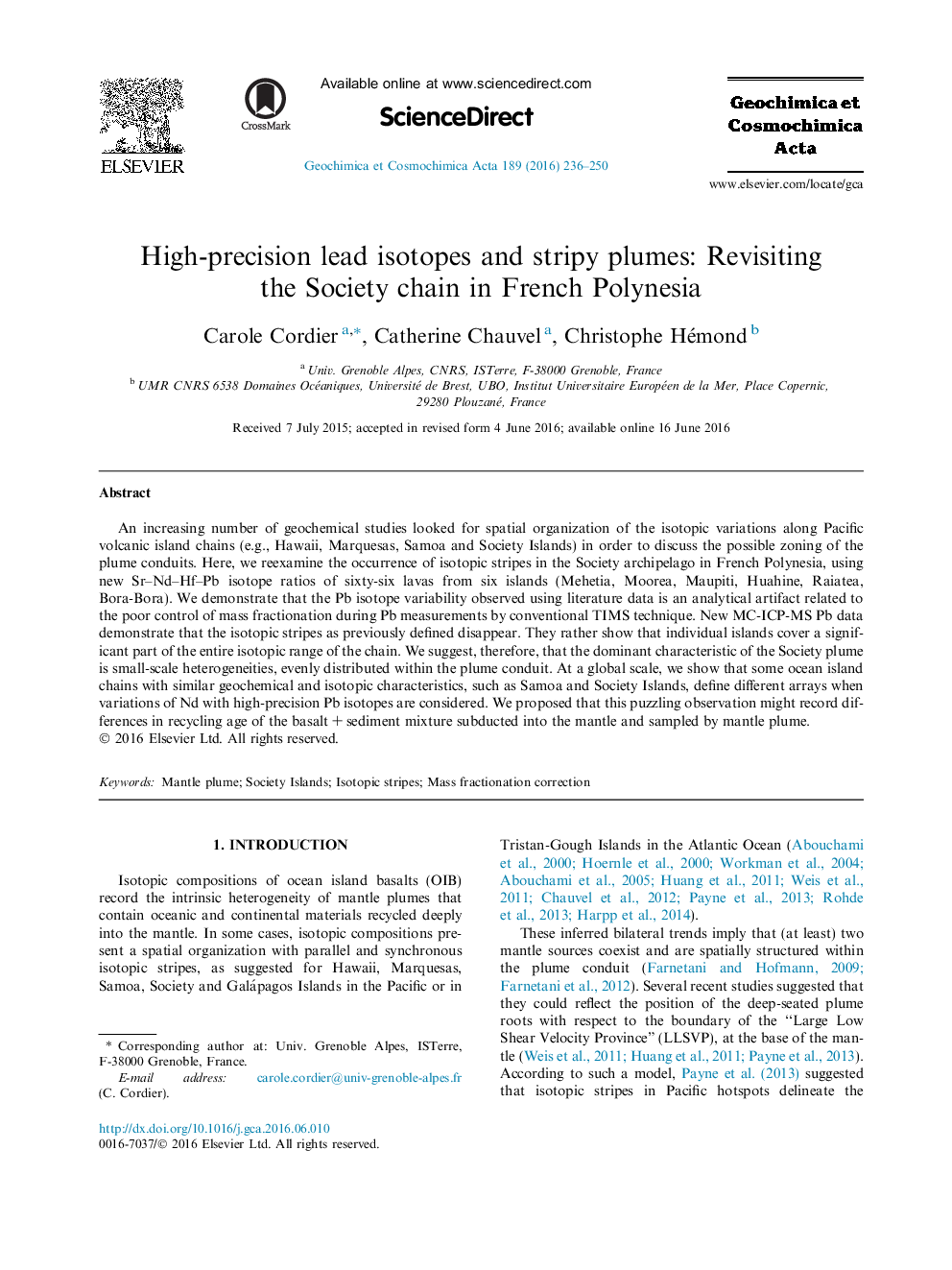| Article ID | Journal | Published Year | Pages | File Type |
|---|---|---|---|---|
| 6437256 | Geochimica et Cosmochimica Acta | 2016 | 15 Pages |
An increasing number of geochemical studies looked for spatial organization of the isotopic variations along Pacific volcanic island chains (e.g., Hawaii, Marquesas, Samoa and Society Islands) in order to discuss the possible zoning of the plume conduits. Here, we reexamine the occurrence of isotopic stripes in the Society archipelago in French Polynesia, using new Sr-Nd-Hf-Pb isotope ratios of sixty-six lavas from six islands (Mehetia, Moorea, Maupiti, Huahine, Raiatea, Bora-Bora). We demonstrate that the Pb isotope variability observed using literature data is an analytical artifact related to the poor control of mass fractionation during Pb measurements by conventional TIMS technique. New MC-ICP-MS Pb data demonstrate that the isotopic stripes as previously defined disappear. They rather show that individual islands cover a significant part of the entire isotopic range of the chain. We suggest, therefore, that the dominant characteristic of the Society plume is small-scale heterogeneities, evenly distributed within the plume conduit. At a global scale, we show that some ocean island chains with similar geochemical and isotopic characteristics, such as Samoa and Society Islands, define different arrays when variations of Nd with high-precision Pb isotopes are considered. We proposed that this puzzling observation might record differences in recycling age of the basalt + sediment mixture subducted into the mantle and sampled by mantle plume.
